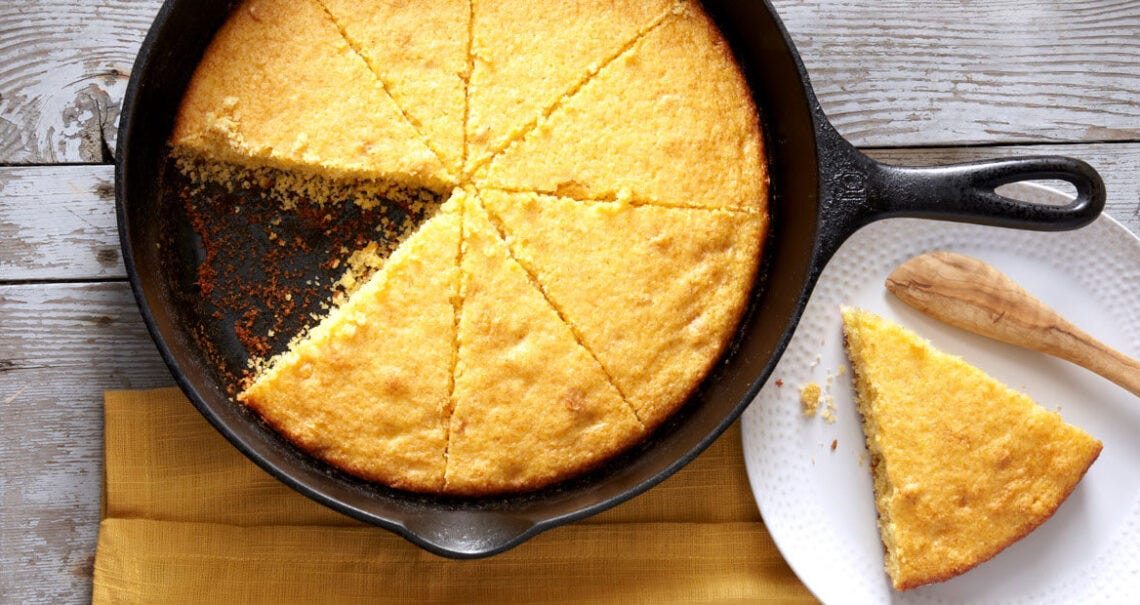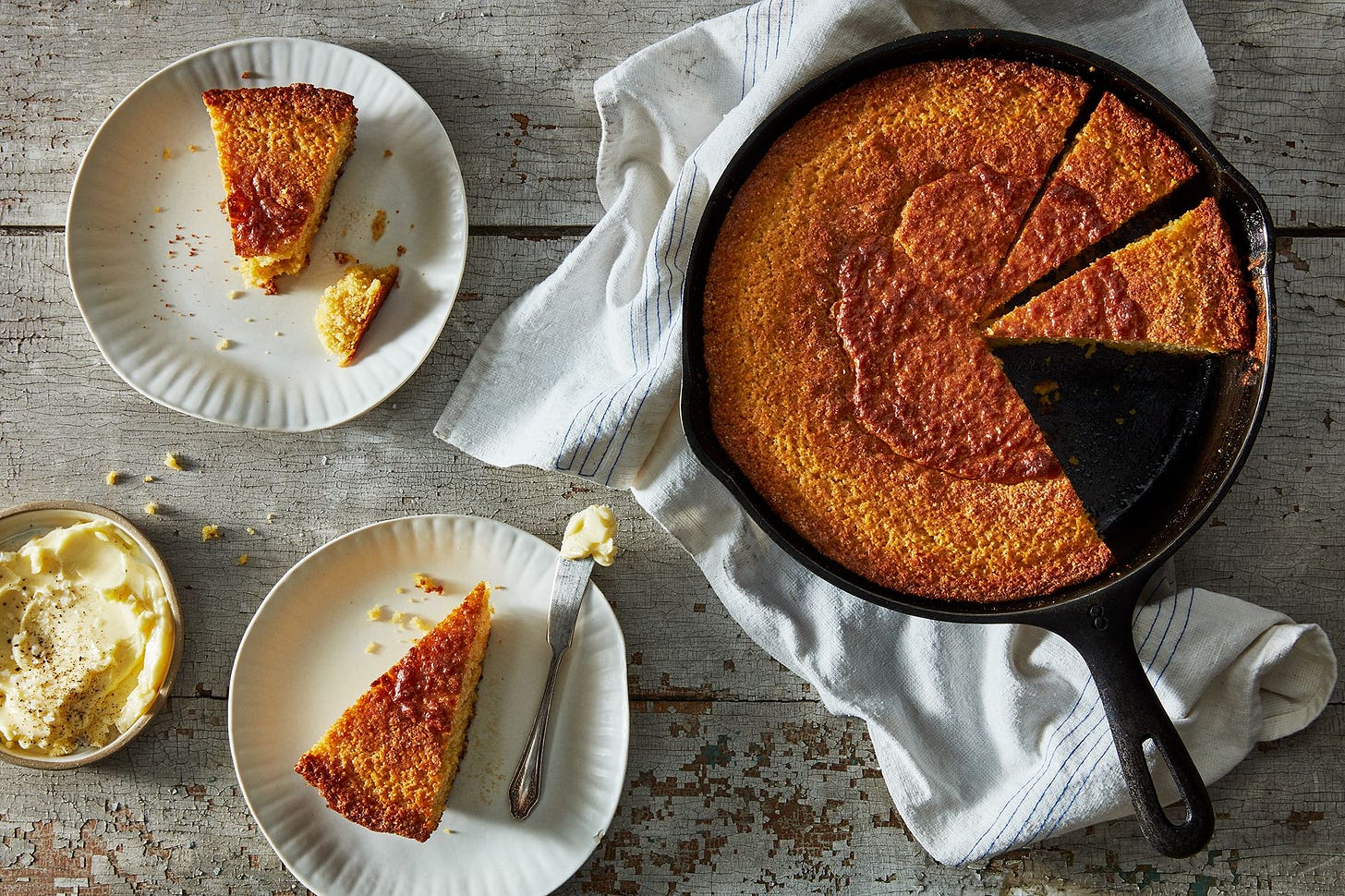In the South, we don’t just eat cornbread—we come from it. It's our birthright, our bargaining chip, and, in some families, the reason someone got cut out of the will.
Let’s connect!
Think of Substack as the Front Porch of the Internet, where we can gather, grab a cup of coffee, and share our recipes and stories.
I like to call it Heritage Storytelling. It allows us to step into living history.
Best of all, we can do this together.
You want to know who someone is? Don’t ask their sign. Don’t ask who they voted for. Ask how they make their cornbread.
If it’s as sweet as cake, you might be talking to someone who learned to cook north of the Mason-Dixon line—or worse, in a test kitchen run by someone named "Chad" who thinks cast iron is “vintage.”
If it’s dry as sawdust and shaped like muffins, bless them. They’re trying.
But if it’s skillet-born, with a crust crisped to glory in bacon grease, and not a single teaspoon of sugar in sight—you've found yourself a righteous soul. Possibly marriage material.
In our house, Mama had rules:
Cornbread is not a dessert. That’s what pecan pie is for.
Never eat it with a fork unless you're in front of company or trying to impress your mother-in-law.
And don’t you ever put actual corn kernels in it unless you're trying to start a fight.
When I was growing up, we ate it with everything: red beans, turnip greens, chili, barbecue, buttermilk (for the brave), and once, in a moment of desperation, a peanut butter sandwich made with leftover cornbread halves.
It was… chewy. But filling.
Good Cornbread makes a distinctive sound.
You could tell how good the cook was by the sound of her cornbread hitting the plate. If it thudded like a doorstop? That’s Aunt Joyce. Bless her, she never got the oven temperature right.
But if it made a soft, holy landing and left a buttery scent hanging in the air? That was Mama. And people still talk about it in hushed tones at church.
Cornbread is how we say welcome, I’m sorry, and I love you, even if I’m still mad about what you said at Thanksgiving. It’s food with memory baked in.
So no, we don’t need your fancy mix or your maple cornbread cupcakes. We just need cornmeal, buttermilk, and a skillet older than the man you warned us not to marry.
My secrets to crispy Southern Cornbread
This is my quick and easy updated recipe.
I like to use a self-rising cornmeal mix. You can find self-rising mix in your baking aisle with the flour. Don’t just buy a bag of cornmeal. You won’t like me anymore and will call me awful names if you do. White Lily makes a good one.
A cast-iron skillet is the best way to make sure the crust is golden and crispy. The key for the crispy crust is to have your skillet screaming hot and plenty of oil in it when you pour in your batter. Heat it in the oven or on the stovetop.
I like to flip the cornbread out of the skillet while it’s raging hot onto my oven mitt and put it back in the pan with the pretty side up.
2 cups self-rising cornmeal mix, not just plain cornmeal
2 eggs or 1 extra-large egg
2 tablespoons vegetable oil or an equivalent amount of refined coconut oil, bacon grease, or lard
1/4 cup vegetable oil for the skillet if using cast iron; an equivalent amount of refined coconut oil, bacon grease, or lard will substitute
1 3/4 cups buttermilk or regular milk. Start with 1 cup of liquid if you are using regular milk, and add the rest as necessary.
Instructions
Preheat the oven to 400 degrees.
If you are using cast iron ( and I know you are), place the 1/4 cup of oil in the bottom of a 9″ skillet and place it over high heat on your stovetop while you make the batter.
Pour the cornmeal into a bowl and add the oil, egg, and buttermilk.
Mix until combined and drop a small amount into your skillet.
If it sizzles immediately, go ahead and pour in your batter to within 1 inch of the top. If you want a thinner cornbread, just don’t pour in as much.
Transfer the skillet from the stove top to the hot oven.
Bake 25-30 minutes or until golden and set.




Thank you for sharing your recipe, Pat. I love cornbread.
Thank you for sharing!!
I asked for a cornbread recipe and you came through.